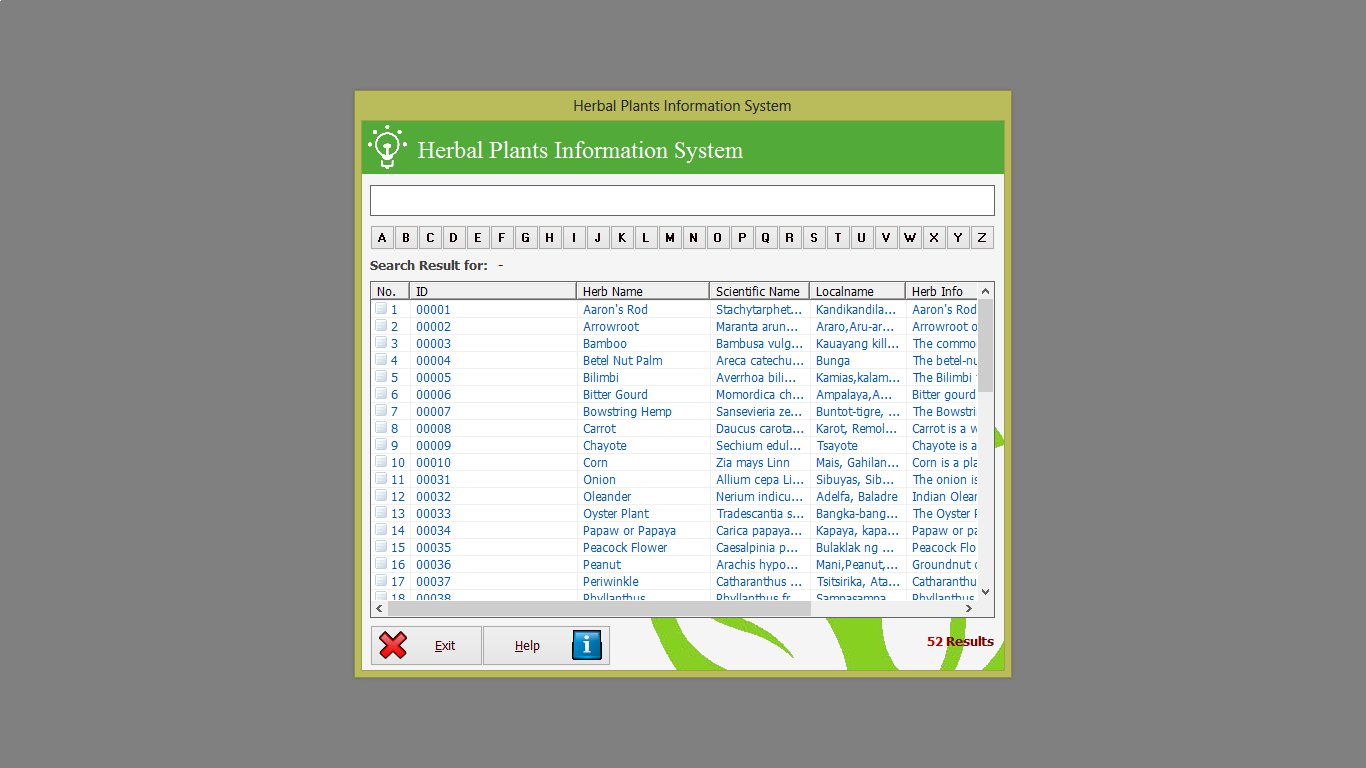Arduino Based Door Lock System Review of Related Literature
Review of Related Literature and Studies
The following list of studies and literature will serve as a guide to the developers and researchers in the development of the research entitled Arduino Based Door Lock System.
Related Literature
According to Cha Zhang, Et.al. (June 2010). State that the Face detection is the most studied topics in the computer vision literature. They survey the recent advances in face detection the one is the Seminal Viola- jones face detection it contains three main ideas to build a successful face detector that can run in time: the integral image, classifier learning with AdaBoost, and the Attentional cascade structure. With the rapid increase of availability of modern sensing, analysis and rendering equipment and technologies, computers are becoming more and more intelligent. There have been hundreds of reported approaches to face detection. Early works (before year 2000) had been surveyed. A Survey of Recent Advances in Face Detection (2010).“Boosting- Based Face Detection and Adaption” by Cha Zhang, et.al.
According to Raghu Ram Gangi, Et.al. (March-April 2013) the main purpose of this paper is to design and implement a door lock high security system based on RFID, Face Recognition and GSM technology which can be organized in bank, secured offices and homes. We have implement a door lock security system based on RFID, Face detection, and GSM technology containing door locking system which can activate, authenticate, and validate the user and unlock the door in real time for door lock secure access. Face detection is one of many forms of biometrics, used to identify individuals and verify their identity. The main advantage of using RFID , Face detection and GSM is more secure than other systems. International Journal of Emerging Trends & Technology in Computer Science (IJETICS) ISSN: 2278-6856 Volume 2, Issue 2, March – April 2013 ‘’LOCKER OPENING AND CLOSING SYSTEM USING RFID, FINGERPRINT, PASSWORD AND GSM’’ by Raghu Ram. Gangi, Et.al.
According to S.Anupriya, Et.al. (April 2014) In this project the microcontroller, where its sends data to the computer to activate the camera when the microcontroller receive signals, is used as an interface circuit connecting the microcontroller to the computer. Through the use of the security camera, users are able to monitor the situation and get timely information about persons with the fast advancing technology. This project provides the SMS so we can identify the intruder by sending SMS from transmitter phone to receiver phone. If anyone misuses the system, image will be captured by using web camera. DEPARTMENT OF TECHNOLOGY, ADHIYAMAAN COLLEGE OF ENGINEERING , HOSUR, INDIA S.Anupriya, et.al. (Volume 2 April 2014 Page 125-128).

According to R.Ramani, Et.al. The main goal of this paper is to design and implement a bank locker security system based on RFID and GSM technology which we can used in bank secured offices and homes. some people will try to cheat or steal the property which may endanger the safety of money in the bank house and office. there are many types of alarm systems available in the market which utilizes different types of sensor. International Journal of Computer Applications (0975-8887) Volume 57-No.18, November 2012 ‘’Bank Locker Security Systm based on Rfid and Gsm Technology’’ by R. Ramani, Et.al.
According to W.Zhao , et.al. (December2003) As one of the most successful applications of image analysis and understanding,face recognition has recently received significant attention,especially during the past several years. This paper provides an up-to-date critical survey of still-and video-based face recognition research. FaceRecognition: ALiteratureSurvey W.Zhao, UniversityofMarylandACMComputingSurveys, (Vol.35,No.4,December2003,pp.399–458).
According to M. Meenakshi( Received 29 August 2012; Published online November 10, 2012 ) This system is organized to capture an image sequence, find facial features in the images, and recognize and verify a person. The current implementation uses images captured using a WebCam, compares it to a stored database using methods of Principal Component Analysis (PCA) and Discrete Cosine Transform (DCT). A real-time validation of the identification of the captured images is done using a PC-based system with algorithms. Real-Time Facial Recognition System—Design, Implementation and Validation M. Meenakshi Journal of Signal Processing Theory and Applications (2013) 1: 1-18 doi:10.7726/jspta.2013.1001.
According to Surendra Sot proposed SMS Based Car Security System. It introduces the integration between monitoring and tracking system. The system can send SMS and SMS to the owner to have fast response especially if the car is nearby. As soon as there is intrusion detected, first the SMS is sent to master user and the picture of the intruder will be sent via local GSM/GPRS service provider to user (and / or) police mail ID. The implementation and testing results show the success of prototype in sending SMS to owner within 30 seconds. The timing and results are suitable to owner and police to take suitable action against intruder. User can also control the module using command. User has to send different SMS to module while configuration of module for master. Master user can be change as per need, only master user can make changes in to the module. SMS Based car Security System Surendra Sot Department of Electronics and Communication Engineering SRTMU Nanded, Maharashtra, India Surendra_sot@yahoo.co.in IJECSE,Volume2, Number 2 Surendra Sot, et al.
According to Shang-Hung Lin, The main goal of this paper introductory course of this new information processing technology. The paper shows the readers the generic framework for the face recognition system, and the variants that are frequently encountered by the face recognizer. Several famous face recognition algorithms, such as Eigen faces and neural networks, will also be explained. Network access control via face recognition not only makes hackers virtually impossible to steal one’s “password”, but also increases the user-friendliness in human-computer interaction. An Introduction to Face Recognition Technology Shang-Hung Lin, Ph.D. IC Media Corporation shanghung.lin@ic-media.com Informing Science Special Issue Multimedia Informing Technologies – Part 2 Volume 3 No. 1, 2000.
According to Jawad Nagi, et.al.( March 7-9, 2008) This paper presents a new technique for human face recognition. This technique uses an image-based approach towards artificial intelligence by removing redundant data from face images through image compression using the two-dimensional discrete cosine transform. Face recognition, discrete cosine transform, self-organizing map, neural network, artificial intelligence. The DCT extracts features from face images based on skin color. Feature vectors are constructed by computing DCT coefficients.
A MATLAB based Face Recognition System using Image Processing and Neural Networks (March 7-9 2008) JawadNagi, et.al. Department of Electrical and Electronics Engineering UniversitiTenagaNasionalFarrukhNagi Department of Mechanical Engineering UniversitiTenagaNasional.
Related Studies
According to Turk Matthew,et.al (1987) Eigenfaces is the name given to set of eigenvectors when they are used in the computer vision problem of human face recognition. The eigenvectors are derived from the covarience matrix of the probability distribution over the high-dimensional vector space of face images. The eigenfaces themselves from a basic set of all images used to construct the covariance matrix.
This produces dimensions reduction by allowing the smaller set of basis images to represent the original training images. The eigenfaces that are creates will appear as light and dark areas that are arranged in a specific pattern. EigenFaces(1987) by Turk Matthew,et.al.
Based on the study of Malik M.H entitled “Automated Door Lock System”(2008). The project that was built consists of hardware & software development. This was used on SMS to open the Room Door. The user can open the door by sending a text message to the system. The system will identify and check it for the safety purposes. The door lock circuit is designed based on the magnetic core & change to a magnet when power supply is feed to it. This magnet will act as a locking part of the door. It will automatic open if anyone send the right SMS to the system. “Automated Door Lock System” by Malik M.H (2008).
Based on the study of Edgell, Jeffrey and Trimpe Andrew, there are 4 kinds of improving the accuracy of face detection:
- Image Quality- image quality affects how well facial-recognition algorithms work. The image quality of scanning video is quite low compared with that of a digital camera. Even high-definition video is at best, 1080p. Usually, it is 720p. These values are equivalent to about 2MP and 0.9MP, respectively, while an inexpensive digital camera attains 15MP. The difference is quite noticeable.
- Image Size- When a face-detection algorithm finds a face in an image or in a still from a video capture, the relative size of that face compared with the enrolled image size affects how well the face will be recognized. An already small image size, coupled with a target distant from the camera, means that the detected face is only 100 to 200 pixels on a side. Further, having to scan an image for varying face sizes is a processor-intensive activity. Most algorithms allow specification of a face-size range to help eliminate false positives on detection and speed up image processing.
- Face Angle- The relative angle of the target’s face influences the recognition score profoundly. When a face is enrolled in the recognition software, usually multiple angles are used (profile, frontal and 45-degree are common). Anything less than a frontal view affects the algorithm’s capability to generate a template for the face. The more direct the image (both enrolled and probe image) and the higher its resolution, the higher the score of any resulting matches.
- Processing and Storage- Even though high-definition video is quite low in resolution when compared with digital camera images, it still occupies significant amounts of disk space. Processing every frame of video is an enormous undertaking, so usually only a fraction (10 percent to 25 percent) is actually run through a recognition system. To minimize total processing time, agencies can use clusters of computers. However, adding computers involves considerable data transfer over a network, which can be bound by input-output restrictions, further limiting processing speed.
As technology improves, higher-definition cameras will become available. Computer networks will be able to move more data, and processors will work faster. Facial-recognition algorithms will be better able to pick out faces from an image and recognize them in a database of enrolled individuals. The simple mechanisms that defeat today’s algorithms, such as obscuring parts of the face with sunglasses and masks or changing one’s hairstyle, will be easily overcome.
An immediate way to overcome many of these limitations is to change how images are captured. Using checkpoints, for example, requires subjects to line up and funnel through a single point. Cameras can then focus on each person closely, yielding far more useful frontal, higher-resolution probe images. However, wide-scale implementation increases the number of cameras required.
According to Ople et.al. entitled “Electronic Logbook with Door Lock System” (2010) included that using the electronic log book with door lock system for CICT is a system that was mainly focused on monitoring the attendance of CICT Faculty members using biometric door lock finger print scanner that installed in the faculty room. These security door locks operated by finger print scanning on a scanner that has already been programmed to identify the unique finger print and it indergone through finger print recording where the finger print of an individual will be saved in the database. Electronic Logbook with Door Lock System” (2010)
Based on the study of Undergraduate Thesis presented to the Faculty of College of Information and Communication Technology. Bulacan State University entitled “Face Recognition with Magnetic Door Lock Security System” (2014) to secure and monitor the room & also the authorized person that logs in. this is the concept of putting a biometrics with enclosure for the computer units. There are only few selected people who can access the biometrics and has an authority to take or open the computer units in case there is a problem and must repair it. Once the biometrics are accessed by the authorized person, it will log & record it to the database, so it’s easy to determine who the one last logged in.
The aim of the Face Recognition w/ magnetic Door Lock Security System is to maintain the security inside the room with or without people against the burglar. In this study, your home will improve its security system 24/7.
In the system defining keys is an automated process and hence no man power is required. Once the system identifies the face it opens or closes the door when a recognized person enters the room. A face identification system does not require any advanced hardware, as it can be used with existing image capture devices (webcams, security cameras etc.). The first step of human face identification is to extract the relevant features from facial images. There are three major research groups which propose three different approaches to the face recognition problems namely the first group with facial characteristics which are used by human beings in recognizing individual faces. The second group performs with the human face identification based on feature vectors extracted from profile silhouettes while the third group uses feature vectors extracted from a frontal view of the face. Most of face recognition algorithms fall into one of two main approaches: feature-based and image based algorithms.
Feature-based methods explore a set of geometric features, such as the distance between the eyes or the size of the eyes, and use these measures to represent the given face. These features are computed using simple correlation filters with expected templates.
Credits to the respective authors of the different cited studies in this article
You may visit our Facebook page for more information, inquiries, and comments. Please subscribe also to our YouTube Channel to receive free capstone projects resources and computer programming tutorials.
Hire our team to do the project.


